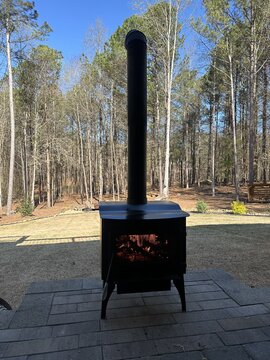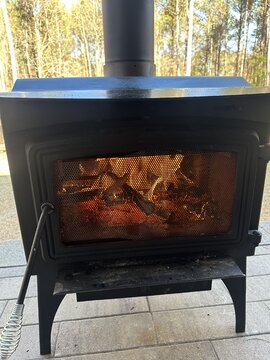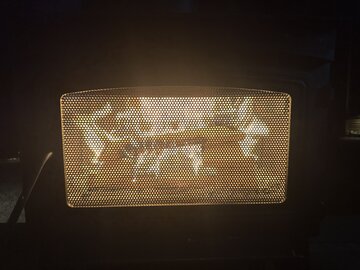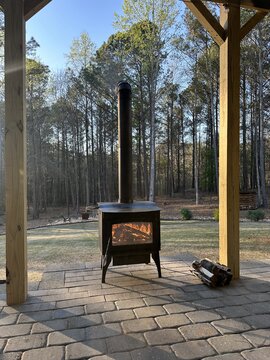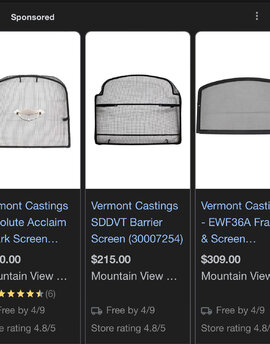Alright, after much research and many....many trial sessions I am happy with what I found to be the safest way for what I wanted. What I wanted was essentially a Chimenea or a Metal Firepit sitting outside of our covered patio. But I also wanted the look of the wood stove and a way to direct the smoke/heat away from our house/deck.
If you saw my other thread, we just could not come up with an aesthetic way to use a Class A chimney pipe. So what I have done and decided on
is this:
1. I have gutted the interior of the stove, minus the fire brick. Basically a metal box with a completely open 6" flue.
2. I have used one piece of stove pipe with a 90 on top facing away from the house.
3. It burns great and drafts extremely well. Basically a chimenea that puts off some great heat but I am able to direct the output away from the deck.
This works EXCELLENT for our space and the smoke/embers are never anywhere close to anything. This would never be left unattended of course either.
My main wish here was to remove the glass and keep the "door closed" look but I do not need radiant heat....just the immediate frontal heat and ambiance. However, when I run the stove with the door open completely or the glass removed, I do get a fair amount of smoke coming out of the front
from time to time which is no good....
If I run it with the door cracked.....perfect! No smoke out the front at all....but would really love to remove the glass.
With how this drafts and everything inside (baffle board, baffle plate, etc. etc.) removed I figured 100% of the smoke would shoot straight up the pipe. Should I try welding a plate over the intake on the secondary air on each side under the stove? Could that be making a swirling effect inside the stove and pushing some out of the front?
Or would a "deeper" stove work better for what I am trying to do here? I just cannot see how if the door is open and the flue is open that smoke would make its way out the front.
In hindsight, I should have just bough an old-school stove and I would have had what I have now....but here we are lol!
Any ideas?
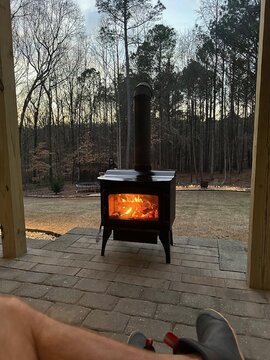
If you saw my other thread, we just could not come up with an aesthetic way to use a Class A chimney pipe. So what I have done and decided on
is this:
1. I have gutted the interior of the stove, minus the fire brick. Basically a metal box with a completely open 6" flue.
2. I have used one piece of stove pipe with a 90 on top facing away from the house.
3. It burns great and drafts extremely well. Basically a chimenea that puts off some great heat but I am able to direct the output away from the deck.
This works EXCELLENT for our space and the smoke/embers are never anywhere close to anything. This would never be left unattended of course either.
My main wish here was to remove the glass and keep the "door closed" look but I do not need radiant heat....just the immediate frontal heat and ambiance. However, when I run the stove with the door open completely or the glass removed, I do get a fair amount of smoke coming out of the front
from time to time which is no good....
If I run it with the door cracked.....perfect! No smoke out the front at all....but would really love to remove the glass.
With how this drafts and everything inside (baffle board, baffle plate, etc. etc.) removed I figured 100% of the smoke would shoot straight up the pipe. Should I try welding a plate over the intake on the secondary air on each side under the stove? Could that be making a swirling effect inside the stove and pushing some out of the front?
Or would a "deeper" stove work better for what I am trying to do here? I just cannot see how if the door is open and the flue is open that smoke would make its way out the front.
In hindsight, I should have just bough an old-school stove and I would have had what I have now....but here we are lol!
Any ideas?




 !
!